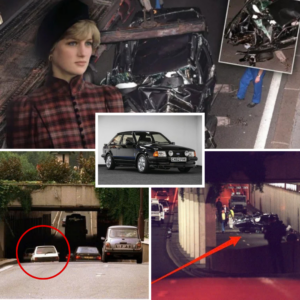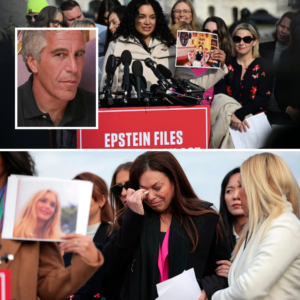On June 12, 2025, Air India Flight AI-171, a Boeing 787-8 Dreamliner, met catastrophe seconds after departing Ahmedabad’s Sardar Vallabhbhai Patel International Airport for London Gatwick. The disaster claimed 241 of 242 lives onboard and 29 on the ground when the plane slammed into the B.J. Medical College complex. Amid ongoing probes into the wreckage and data, a jarring discovery has surfaced: the flight data recorder’s (FDR) last five lines reveal a sudden control input not from the pilots, its origin unknown. This piece delves into this finding’s implications, the continuing investigation, and India’s aviation safety landscape, drawing on recent insights and analysis.
The Disaster’s Timeline
Flight AI-171 lifted off at 1:38 PM IST, June 12, 2025, with 230 passengers and 12 crew. Just 40 seconds later, at 1:40 PM, a mayday call—“No thrust, mayday, mayday”—preceded the aircraft’s crash into a hostel complex less than 2 kilometers from the runway. The Boeing 787-8, VT-ANB, boasted cutting-edge systems, yet a rapid calamity unfolded. The crash, among India’s deadliest aviation events, killed 241 onboard and 29 on the ground, leaving one survivor.

The Aircraft Accident Investigation Bureau (AAIB), aided by the U.S. National Transportation Safety Board (NTSB) and UK’s Air Accidents Investigation Branch (AAIB), has been dissecting the black boxes—cockpit voice recorder (CVR) and FDR—retrieved by June 24. Data extraction began promptly, with a preliminary report expected by July 11. However, the FDR’s mysterious control input has shifted focus, raising new questions about the crash’s cause.
The Unexplained Data: An Anomalous Input
Insider sources reveal the FDR’s final five lines show a sudden control input altering the aircraft’s path, uninitiated by the pilots. Termed a “sudden input from an unknown source,” this anomaly fuels speculation. It might involve flight control surfaces, throttle adjustments, or other vital systems, though specifics remain elusive. Its non-pilot origin suggests possibilities: mechanical defect, electronic glitch, external tampering, or sabotage.
The 787-8’s fly-by-wire system, processing pilot inputs via electronics, not mechanics, is advanced but prone to software bugs, cyberattacks, or erratic behavior. The ram-air turbine (RAT), a backup power system, engaged pre-crash, hinting at primary power loss. Yet, the FDR’s rogue input deviates from standard emergency protocols, deepening the enigma.

Investigating Potential Causes
The AAIB probes multiple angles: dual engine failure, fuel contamination, technical faults, and sabotage. Air India pilot simulations rule out landing gear or flap issues as sole causes, suggesting a complex failure, possibly engine-related. The CVR’s “no thrust” mayday and FDR data lean toward engine trouble, but the mystery input muddies this theory.
Fuel contamination, potentially clogging engines, is under review but doesn’t fully explain the control input unless it sparked a broader system failure. Sabotage, though sensitive, remains a consideration, with cyberattacks on the fly-by-wire system unruled out, despite no confirmed evidence. India’s refusal to involve an International Civil Aviation Organization (ICAO) observer stirs transparency concerns, complicating the probe.
India’s Aviation Safety Context
The AI-171 tragedy has reignited scrutiny of India’s aviation safety. Just 38 hours later, Air India Flight AI-187, a Boeing 777 to Vienna, dropped 900 feet post-takeoff from Delhi amid storm warnings, with incomplete pilot reporting. The Directorate General of Civil Aviation (DGCA) responded by grounding those pilots and probing Air India’s safety head.

Post-AI-171, DGCA ordered rigorous checks on India’s 787 fleet, clearing 26 of Air India’s 33 Dreamliners by June 18. Yet, successive incidents spotlight gaps in pre-flight medical checks, catering quality, and inter-departmental coordination. The AAIB’s tie to the Ministry of Civil Aviation questions its autonomy, amplifying calls for reform.
Misinformation and Public Outcry
The crash has fueled digital misinformation, with AI-generated reports and fake videos clouding facts. Experts urge stronger platform accountability to curb this. Post-crash trademark bids for “Flight 171” and “Last Flight AI 171” reflect public frenzy. UK victims’ families plan lawsuits against Air India and Boeing in British courts, seeking redress, while the global aviation sector watches closely for implications on 787 design and Air India operations.
Analysis: High Stakes
The FDR’s rogue input raises critical questions about modern aviation tech. Fly-by-wire systems, enhancing efficiency, risk software flaws or unintended interactions. A cyberattack or glitch could demand industry-wide cybersecurity overhauls. If mechanical or sabotage-related, it points to maintenance or security lapses.
The delayed preliminary report—due July 11—draws flak for its pace, given the crash’s gravity. India’s ICAO exclusion fuels impartiality doubts. While NTSB and UK AAIB collaboration aids, black box handling and slow updates concern stakeholders.
Path Ahead
As AAIB analyzes data, aviation awaits answers to reshape safety, oversight, and trust. The unidentified input in AI-171’s final seconds underscores modern flight tech’s complexities. Whether mechanical, human, or malicious, the tragedy demands robust safety and transparent probes.
The forthcoming preliminary report may clarify the input, but full answers could take months. For now, the aviation world and victims’ families grapple with grief and uncertainty, seeking truth in one of India’s bleakest aviation chapters.




